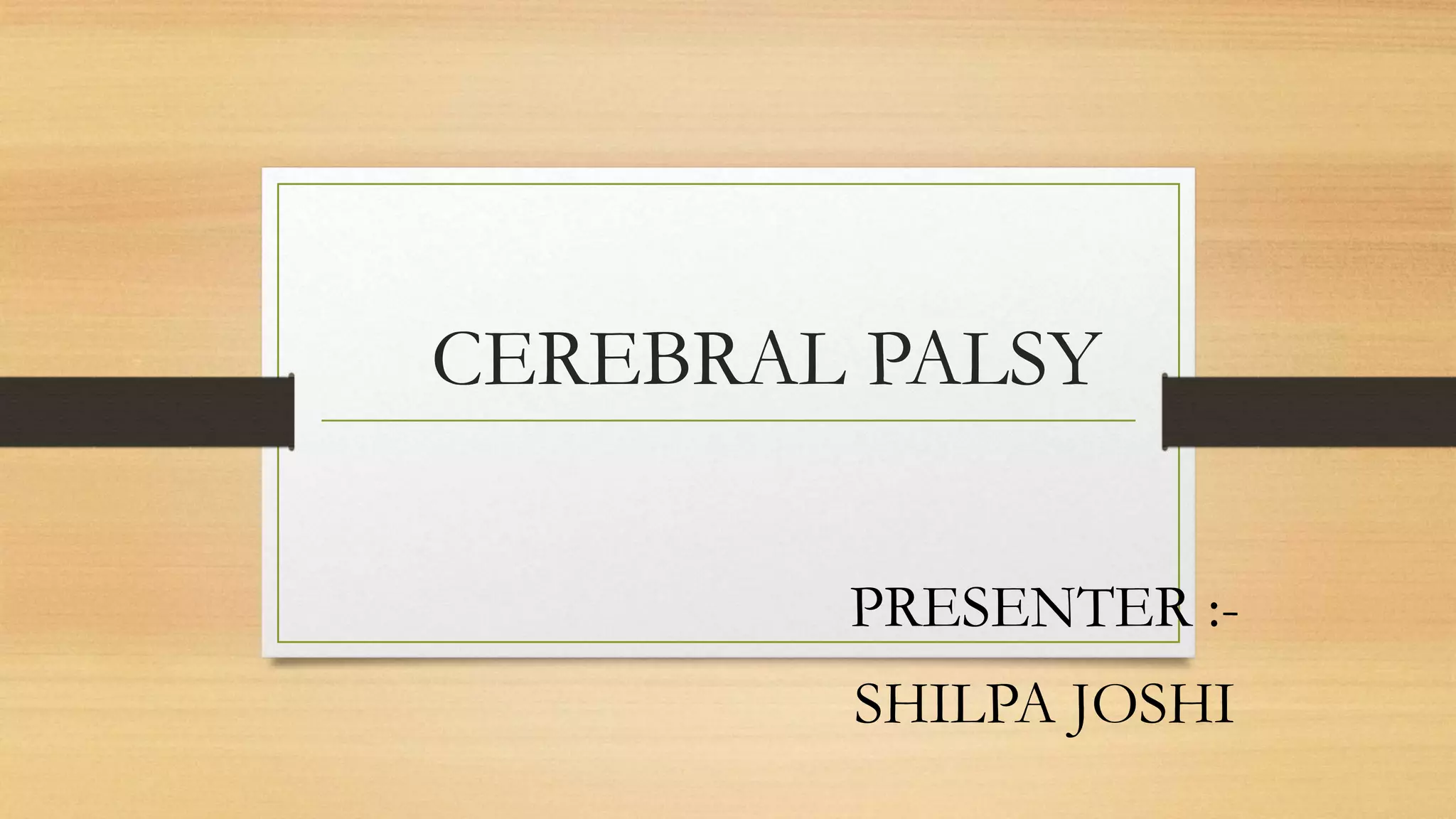Cerebral palsy is a motor function disorder caused by a permanent, non-progressive brain lesion that is present at birth or shortly thereafter. It is characterized by impaired muscle coordination and tone. The main types are spastic, athetoid, ataxic, and mixed cerebral palsy. Treatment focuses on rehabilitation, physical therapy, surgery, and assistive devices to improve mobility and function rather than treating the underlying brain damage. The goals are to maximize independence and quality of life.




































